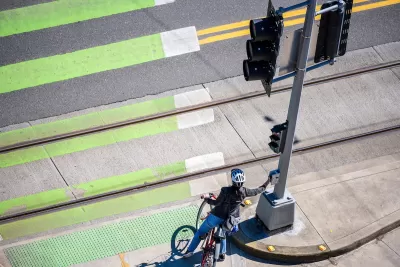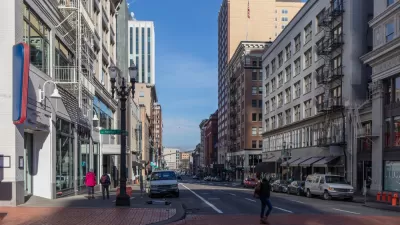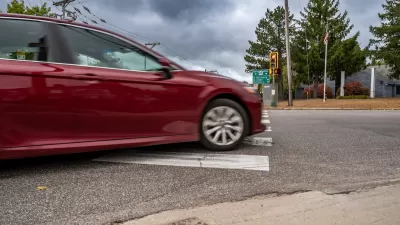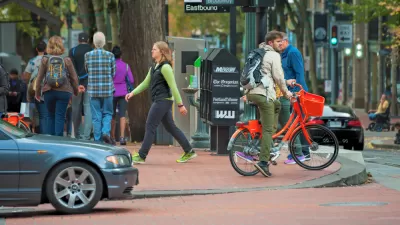A city audit found that the program has failed to reduce traffic deaths and could benefit from a more systematic approach. Meanwhile, PBOT says it needs more state funding to support road safety projects.

A November audit of the Portland Bureau of Transportation’s Vision Zero program calls on the bureau to do more to evaluate the program’s progress as traffic deaths in the cities continue to rise.
As Jim Redden reports in Portland Tribune, “The audit credited PBOT with reducing speed limits across the city and installing more red light enforcement cameras. But it said the effectiveness of some other safety improvements were not being measured.”
The audit calls for a “more systematic approach” that would help the department understand which safety projects are succeeding and which are ineffective.
PBOT spokesperson Dylan Rivera agreed with the assessment but called on the state legislature to increase funding for transportation and safety efforts, saying, “We need the state Legislature to make a big investment in transportation in 2025, by increasing the funding available from the state highway fund that provides the formula funding that cities and counties across Oregon depend on for basic safety, maintenance and livability needs.”
FULL STORY: PBOT: Vision Zero need more money to succeed

Trump Administration Could Effectively End Housing Voucher Program
Federal officials are eyeing major cuts to the Section 8 program that helps millions of low-income households pay rent.

Planetizen Federal Action Tracker
A weekly monitor of how Trump’s orders and actions are impacting planners and planning in America.

Ken Jennings Launches Transit Web Series
The Jeopardy champ wants you to ride public transit.

Rebuilding Smarter: How LA County Is Guiding Fire-Ravaged Communities Toward Resilience
Los Angeles County is leading a coordinated effort to help fire-impacted communities rebuild with resilience by providing recovery resources, promoting fire-wise design, and aligning reconstruction with broader sustainability and climate goals.

When Borders Blur: Regional Collaboration in Action
As regional challenges outgrow city boundaries, “When Borders Blur” explores how cross-jurisdictional collaboration can drive smarter, more resilient urban planning, sharing real-world lessons from thriving partnerships across North America.

Philadelphia Is Expanding its Network of Roundabouts
Roundabouts are widely shown to decrease traffic speed, reduce congestion, and improve efficiency.
Urban Design for Planners 1: Software Tools
This six-course series explores essential urban design concepts using open source software and equips planners with the tools they need to participate fully in the urban design process.
Planning for Universal Design
Learn the tools for implementing Universal Design in planning regulations.
Ada County Highway District
Clanton & Associates, Inc.
Jessamine County Fiscal Court
Institute for Housing and Urban Development Studies (IHS)
City of Grandview
Harvard GSD Executive Education
Toledo-Lucas County Plan Commissions
Salt Lake City
NYU Wagner Graduate School of Public Service





























